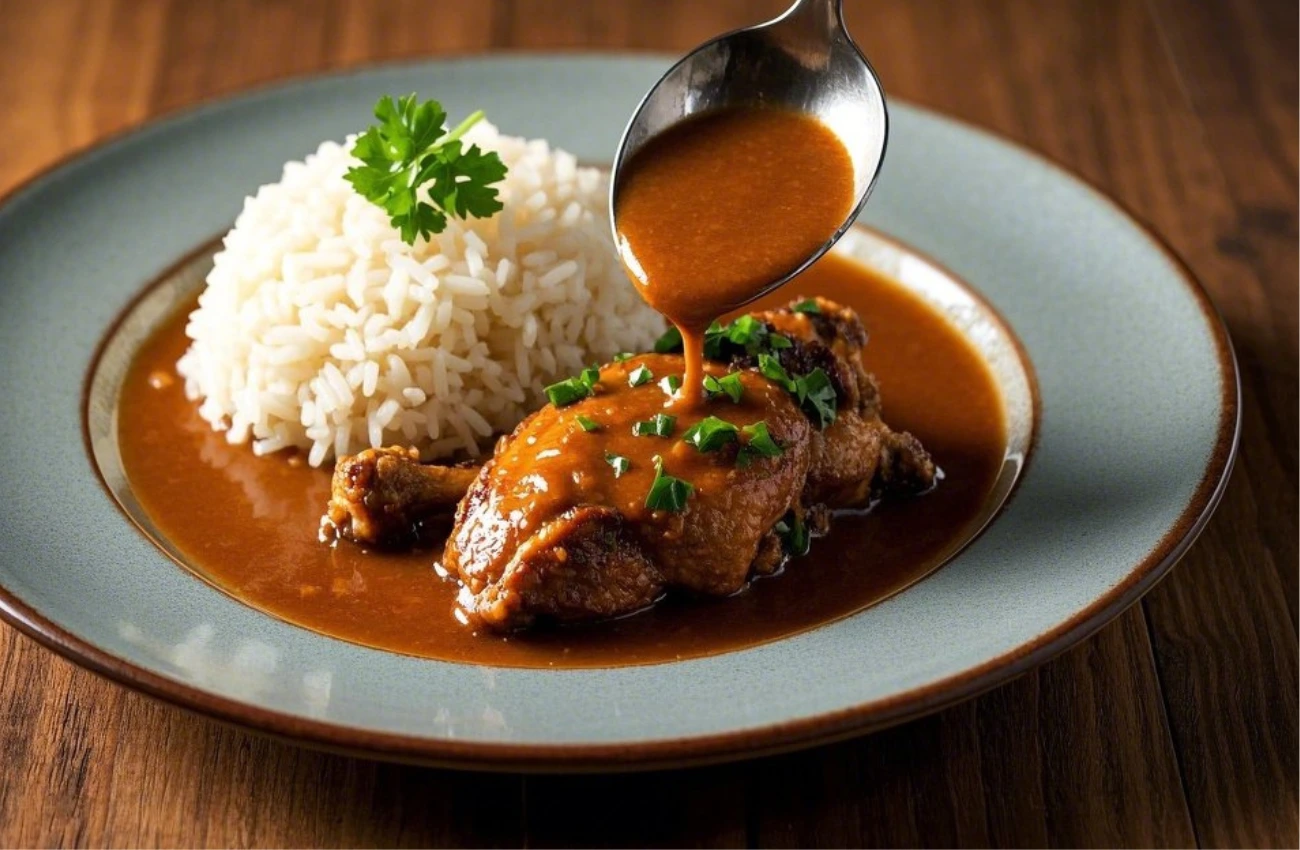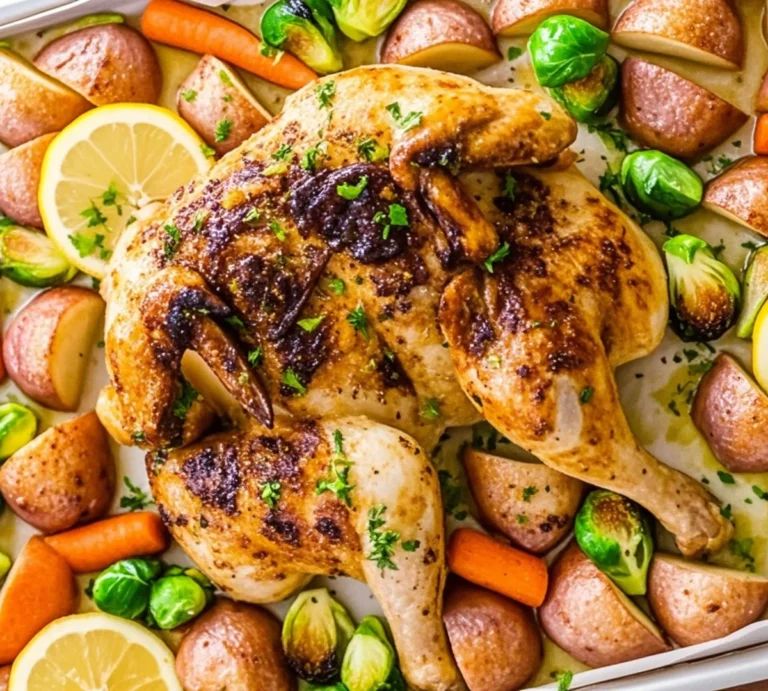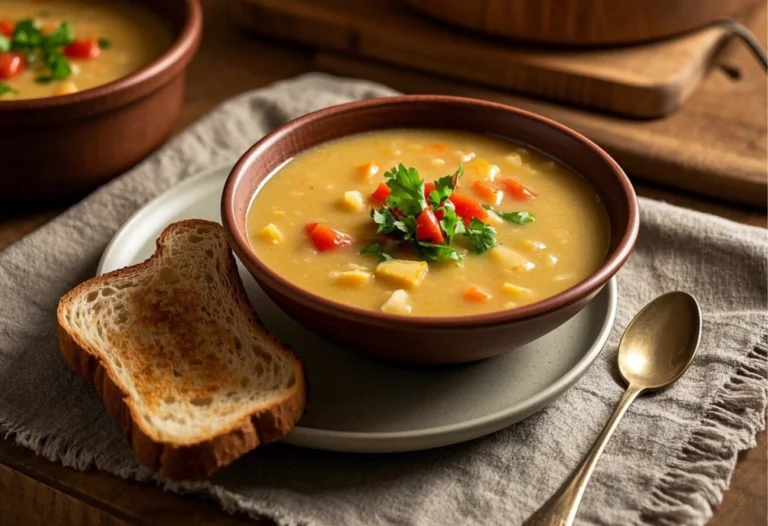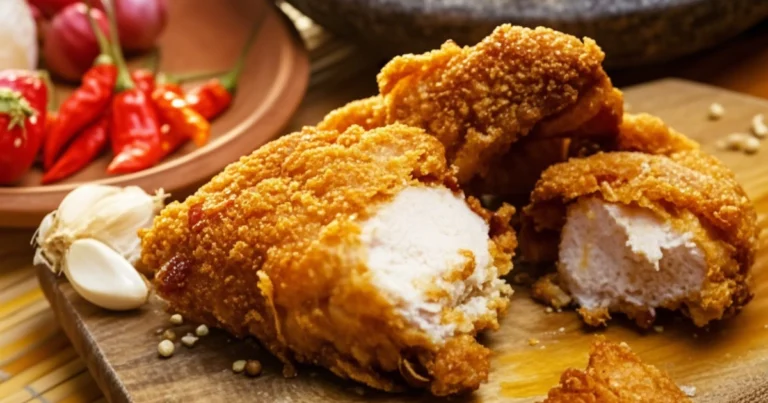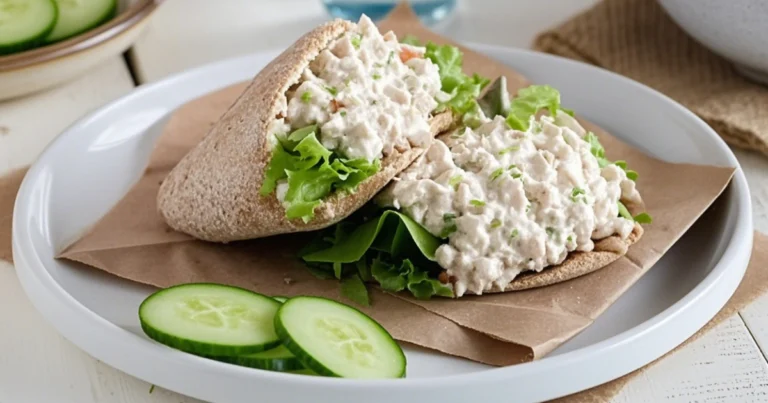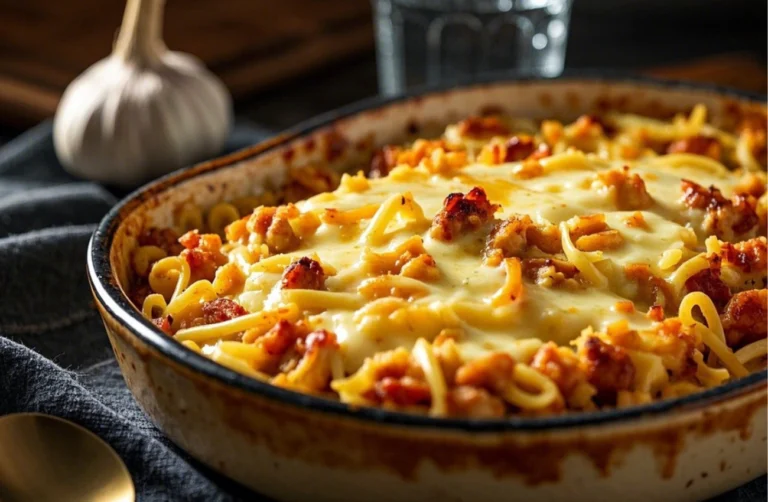Authentic Brown Stew Chicken Recipe: A Flavorful Caribbean Classic
Table of Contents
A Taste of Home in Every Bite
Growing up in a Caribbean household, Sunday afternoons were sacred. The aroma of brown stew chicken simmering on the stove would fill every corner of our home, drawing family members to the kitchen like a magnetic force. This wasn’t just dinner—it was tradition, comfort, and love served on a plate. Today, I’m sharing my family’s authentic brown stew chicken recipe that has been passed down through generations, bringing that same warmth and nostalgia to your kitchen. Whether you’re craving a taste of the islands or looking to expand your culinary horizons, this rich, deeply flavored dish promises to transport you straight to Caribbean shores with just one bite.
The beauty of brown stew chicken lies not only in its complex flavors but also in its accessibility. You don’t need specialized equipment or impossible-to-find ingredients to recreate this Caribbean classic. With some patience and attention to detail, you’ll master a dish that has satisfied hungry families across generations and continents. As you follow along, you’ll discover the techniques that transform ordinary chicken into something extraordinary—a meal worthy of your Sunday table or any special gathering.
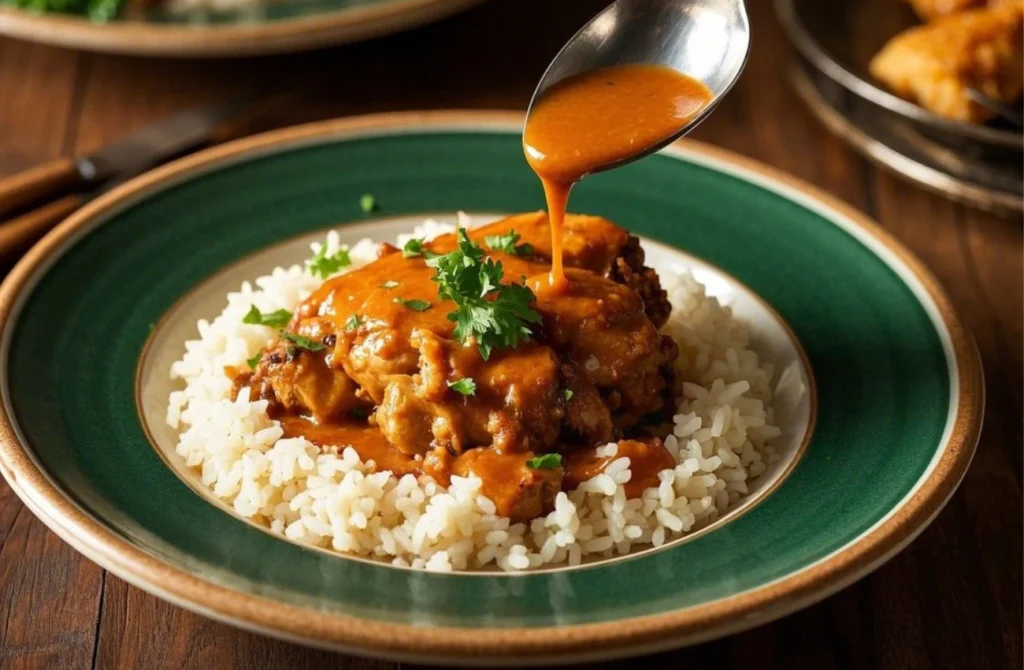
What is Brown Stew Chicken?
The Heart of Caribbean Cuisine
Brown stew chicken stands as a cornerstone of Caribbean cooking, particularly beloved in Jamaica, Trinidad, and throughout the West Indies. This iconic dish features chicken pieces lovingly marinated in a robust blend of herbs and spices, then browned and slow-cooked in a rich gravy until the meat practically falls off the bone. The dish derives its name from the distinctive color achieved through caramelizing sugar before adding the chicken—a technique that produces both the characteristic deep brown hue and the complex, slightly sweet undertones that make this dish unforgettable.
What separates an authentic brown stew chicken from merely braised chicken is the layering of flavors—starting with a potent marinade, followed by the crucial browning process, and finally, the patient simmering that allows all elements to meld into a harmonious whole. The resulting gravy, thick and aromatic, becomes just as important as the chicken itself, perfect for spooning over rice or sopping up with dumplings.
Historical Roots and Cultural Significance
The origins of brown stew chicken trace back to African cooking techniques that survived the Middle Passage and evolved across the Caribbean basin. African enslaved people combined their traditional cooking methods with locally available ingredients, creating a fusion cuisine that would eventually define Caribbean food identity. The slow cooking process—essential for tenderizing tougher cuts of meat—reflects resourcefulness born of necessity.
Across different islands, the dish has developed regional characteristics while maintaining its essential nature. In Jamaica, you’ll find it typically darker and sometimes spicier, while Trinidadian versions might incorporate more fresh herbs. Despite these variations, brown stew chicken remains a unifying element of Caribbean cuisine—a dish that transcends island borders and continues to evolve while honoring its roots.
In Caribbean communities worldwide, brown stew chicken frequently takes center stage at Sunday family gatherings, holiday celebrations, and community events. It’s the kind of meal that requires time and attention—a labor of love saved for occasions when family comes together. Many Caribbean people recall the sound of chicken sizzling in the pot as the soundtrack to family conversations and the prelude to meals where stories and traditions were shared across generations.
The Secret to Authentic Brown Stew Chicken
Key Ingredients That Make All the Difference
Creating truly exceptional brown stew chicken depends on understanding several crucial elements that contribute to its distinctive character. First among these is the browning process that gives the dish its name. When sugar caramelizes in hot oil, it creates a foundation of flavor that cannot be replicated by any shortcut. This step requires attention—the sugar must darken to a mahogany brown without burning, a delicate balance that rewards the patient cook with incomparable depth of flavor.
The choice of chicken pieces significantly impacts your final result. Bone-in chicken, particularly thighs and drumsticks, delivers superior taste and texture compared to boneless cuts. The bones contribute richness to the gravy, while the dark meat remains tender throughout the long cooking process. The skin, too, plays an important role, crisping during the initial browning before surrendering its fat and flavor to the sauce.
Browning sauce (also called “browning” or “burnt sugar”) represents another non-negotiable element in authentic recipes. This dark liquid seasoning provides both color and a subtle bitter-sweet complexity that balances the dish. While commercially available in Caribbean markets and increasingly in mainstream grocery stores, traditional cooks often make their own by carefully burning sugar with water.
Finally, the herb and spice profile creates the signature flavor that distinguishes Caribbean cooking. Fresh thyme, pungent garlic, bright ginger, fiery scotch bonnet peppers, and aromatic scallions form the backbone of the marinade. The proportions may vary between family recipes, but these elements work in concert to infuse the chicken with multiple layers of flavor before it even touches the pot.
Ingredients You’ll Need
For the Chicken Marinade
| Ingredient | Quantity | Notes |
|---|---|---|
| Chicken pieces (bone-in) | 3 pounds | Thighs and drumsticks work best |
| Green onions (scallions) | 4 stalks | Finely chopped |
| Garlic | 4 cloves | Minced |
| Thyme | 4 sprigs | Fresh preferred |
| Scotch bonnet pepper | 1 | Seeded and minced (adjust for heat preference) |
| Ginger | 1 tablespoon | Freshly grated |
| Soy sauce | 2 tablespoons | Low sodium recommended |
| Browning sauce | 1 tablespoon | For color and flavor |
| All-purpose seasoning | 1 tablespoon | Caribbean blend if possible |
| Black pepper | 1 teaspoon | Freshly ground |
| Salt | 1 teaspoon | To taste |
For the Stew
| Ingredient | Quantity | Notes |
|---|---|---|
| Vegetable oil | 3 tablespoons | For browning |
| Brown sugar | 2 tablespoons | For caramelization |
| Onion | 1 medium | Sliced |
| Bell pepper | 1 medium | Sliced |
| Tomatoes | 2 medium | Chopped |
| Tomato paste | 2 tablespoons | For richness |
| Chicken broth | 2 cups | Low sodium |
| Caribbean-style hot sauce | 1 teaspoon | Optional |
| Bay leaves | 2 | For flavor |
| Water | 1 cup | As needed |
Step-by-Step Cooking Instructions
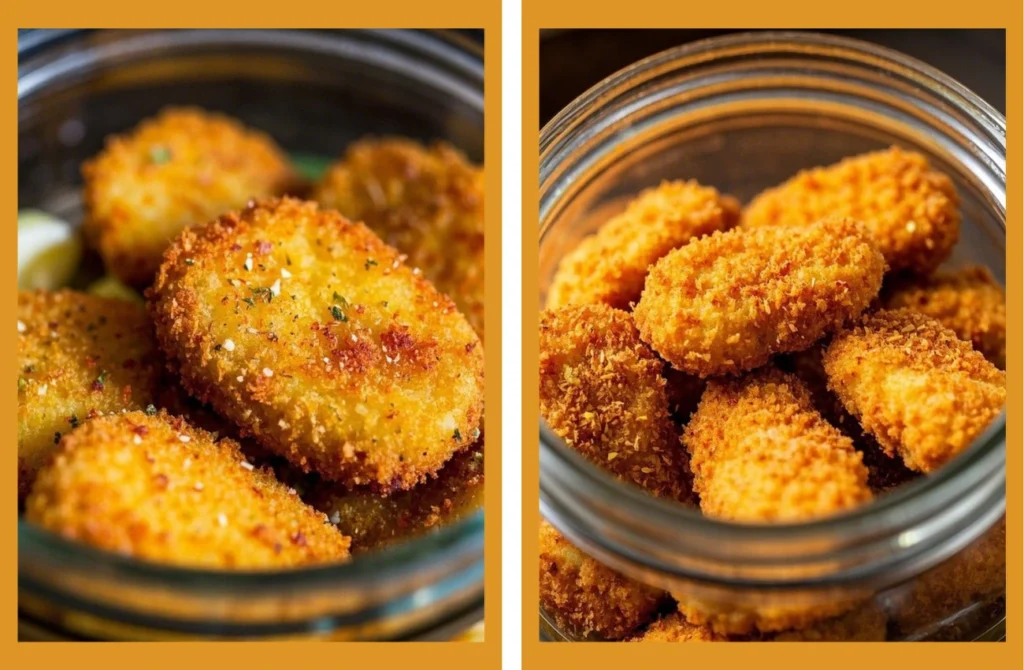
1. Preparing and Marinating the Chicken
The journey to extraordinary brown stew chicken begins with proper preparation and marination. This foundational step infuses the meat with flavors that will define your finished dish.
Start by cleaning your chicken pieces thoroughly. In Caribbean cooking tradition, this often involves rubbing the chicken with lime or lemon juice and rinsing with cool water. This process helps remove any surface impurities and begins tenderizing the meat. Once cleaned, pat the pieces dry with paper towels—this ensures proper browning later.
Place your dried chicken pieces in a large bowl, ready for the marinade. Combine all marinade ingredients in a separate container, mixing well to ensure the spices and aromatics are evenly distributed. Pour this vibrant mixture over the chicken, then use your hands (food-safe gloves recommended) to massage the marinade into every crevice. Pay special attention to getting under the skin where possible—this creates pockets of flavor that will infuse the meat during cooking.
Cover your seasoned chicken and refrigerate for at least two hours, though overnight marination yields noticeably superior results. The longer resting period allows the acidic components (like lime juice) to tenderize while the herbs and spices thoroughly permeate the meat. During this waiting period, the chicken undergoes a transformation, absorbing the complex flavor profile that characterizes authentic Caribbean cooking.
Remember: patience during this phase differentiates good brown stew chicken from great brown stew chicken. Consider preparing your marinade the evening before cooking day to allow for maximum flavor development overnight.
2. The Essential Browning Process
The browning stage represents the heart and soul of this dish—the step that gives brown stew chicken both its name and its distinctive character. Approach this phase with care and attention, as it creates the foundation upon which all other flavors will build.
When you’re ready to cook, remove the marinated chicken from the refrigerator and allow it to come to room temperature for about 30 minutes. This ensures even cooking. Separate the chicken pieces from the marinade, but don’t discard that precious liquid—reserve it for later use in the stew.
Heat your vegetable oil in a large, heavy-bottomed pot or Dutch oven over medium heat. The vessel should be wide enough to brown chicken pieces without crowding, as overcrowding prevents proper browning. Once the oil shimmers with heat, add your brown sugar in an even layer. Watch closely as the sugar transforms—it will begin to bubble, then gradually melt and darken. This requires vigilance; you’re aiming for a deep amber color without burning, which happens quickly once the caramelization begins.
When the sugar reaches that perfect mahogany hue (typically 1-2 minutes), immediately add your chicken pieces skin-side down. The sound should be a satisfying sizzle as the meat meets the caramelized sugar. Allow each piece to develop a rich brown crust before turning—approximately 4-5 minutes per side. Work in batches if necessary rather than crowding the pot.
This browning accomplishes several crucial things simultaneously: it renders fat from the skin, seals in juices within the meat, and coats each piece with caramelized flavors. The chicken isn’t fully cooked at this stage—that comes during the slow simmer ahead—but the color and flavor developed now cannot be added later. Your patience during this step directly affects the depth and complexity of your finished dish.
3. Creating the Rich, Flavorful Stew
With your chicken beautifully browned and set aside, you’ll now build the aromatic base for your stew using the same pot—retaining all those flavorful bits left behind from the browning process.
Add your sliced onions and bell peppers to the pot, stirring to coat them in the caramelized remnants. Allow these vegetables to soften for 3-4 minutes until the onions become translucent and begin to take on some color. This slow cooking releases their natural sweetness, balancing the more robust flavors to come.
Next, incorporate your chopped tomatoes and tomato paste, stirring continuously for about 2 minutes. The tomato paste should darken slightly as it cooks, losing its raw taste and developing a richer flavor profile. This combination brings acidity and body to your gravy, complementing the sweetness established during the browning phase.
Here comes the magic moment—return your reserved marinade to the pot along with the chicken broth and bay leaves. This liquid mixture deglazes the bottom of the pot, dissolving all the caramelized bits that contain concentrated flavor. Add your browned chicken pieces back to the pot, arranging them so they’re partially submerged in the developing sauce.
Bring this mixture to a gentle boil, then immediately reduce the heat to achieve a steady simmer. Cover the pot and allow this harmonious combination to cook undisturbed for 30-40 minutes. During this time, the chicken becomes fork-tender as it releases its juices into the sauce, while simultaneously absorbing flavors from the surrounding liquid—a beautiful exchange that creates the character of the dish.
After this initial cooking period, remove the lid and continue simmering for an additional 10-15 minutes. This uncovered cooking reduces the sauce to your desired consistency—thick enough to coat the back of a spoon but still pourable. The surface of the sauce may develop a slight sheen from the rendered chicken fat, an indication of rich flavor development.
4. Final Touches and Serving Suggestions
As your brown stew chicken approaches completion, it’s time for the final adjustments that elevate it from good to exceptional. First, taste your sauce and adjust the seasoning if necessary—you may want additional salt, a touch more black pepper, or perhaps a splash of hot sauce for heat. Remember that the flavors have concentrated during cooking, so season judiciously.
Remove the bay leaves before serving, as they’ve done their work infusing the sauce with subtle aromatic notes. For a finished presentation that honors the dish’s Caribbean roots, garnish with freshly chopped green onions and a few sprigs of thyme. These final fresh herbs provide bright counterpoints to the deep, slow-cooked flavors of the stew.
Transfer your creation to a large serving platter or individual plates, ensuring each portion includes chicken pieces generously topped with the rich gravy. The visual appeal of this dish—deep mahogany sauce contrasting with vibrant garnishes—signals the feast of flavors awaiting your guests.
For authentic enjoyment, serve your brown stew chicken piping hot alongside traditional accompaniments. The most classic pairing is rice and peas (kidney beans cooked with coconut milk and herbs), which provides the perfect vehicle for soaking up the delectable sauce. Additional traditional sides include fried plantains, which offer sweet contrast to the savory stew, or festival (slightly sweet fried dumplings) for a truly authentic Jamaican meal experience.

Traditional Accompaniments for Brown Stew Chicken
Perfect Pairings
The magic of brown stew chicken extends beyond the dish itself to the harmonious combinations created when paired with traditional sides. These accompaniments aren’t merely afterthoughts but essential components of the complete Caribbean dining experience.
Rice and peas stands as the quintessential partner to brown stew chicken across the Caribbean. Despite its name, this dish typically features kidney beans (not green peas) cooked with rice in coconut milk, flavored with thyme, scallions, and often a whole scotch bonnet pepper (left intact for flavor without overwhelming heat). The creamy rice provides the perfect canvas for the rich chicken gravy, while the beans add subtle sweetness and textural contrast.
Fried plantains bring a delightful sweet element to balance the savory depth of the stew. Choose plantains with yellow peels showing black spots—indicating perfect ripeness for frying. When sliced diagonally and pan-fried until caramelized, they develop crisp edges while remaining tender inside. The contrast between their natural sweetness and the complex flavors of the stew creates a truly satisfying bite.
Festival, a beloved Jamaican street food, offers another traditional pairing option. These slightly sweet fried dumplings—made from cornmeal, flour, sugar, and vanilla—provide a crunchy exterior and soft interior that perfectly complements the saucy nature of brown stew chicken. Their subtle sweetness works harmoniously with the slight caramel undertones in the stew.
For a fresh counterpoint to the rich stew, consider Jamaican cabbage slaw. Unlike American coleslaw, this version typically features cabbage quickly cooked with onions, bell peppers, and carrots, seasoned with thyme and a touch of vinegar. The resulting side dish provides brightness and crunch that cuts through the richness of the stew.
Callaloo or other steamed greens round out the nutritional profile of your meal while adding verdant color to your plate. These mineral-rich leafy vegetables, lightly seasoned and often enhanced with onions and garlic, provide earthiness that grounds the more robust flavors of the chicken.
Recipe Variations Across the Caribbean
Regional Differences and Adaptations
The beauty of brown stew chicken lies partly in its adaptability, with each Caribbean island putting its distinctive stamp on this beloved dish while maintaining its essential character.
Jamaican brown stew chicken typically features the darkest color profile, achieved through generous use of browning sauce and well-caramelized sugar. The flavor often includes a noticeable but controlled heat from scotch bonnet peppers and emphasizes thyme as the predominant herb. Jamaican versions frequently include more vegetables in the stew itself, particularly carrots and potatoes that absorb the rich gravy.
Trinidadian interpretations often incorporate a more complex herb profile, sometimes including culantro (shadow bensis) and a greater proportion of garlic. You’ll often find “green seasoning”—a fresh herb paste that’s a staple in Trinidad and Tobago kitchens—used in the marinade, contributing distinctive brightness. The finished dish may appear slightly lighter in color than Jamaican versions while maintaining similar depth of flavor.
Across other islands like Barbados, St. Lucia, and Grenada, you’ll encounter subtle variations reflecting local preferences. Some recipes incorporate a splash of rum during cooking, others include bell peppers of various colors, while some feature a touch of allspice or cinnamon for aromatic complexity. Each island’s interpretation offers a slightly different experience while remaining true to the dish’s soul.
For home cooks, these regional variations offer permission to adapt brown stew chicken to your personal taste or available ingredients. If scotch bonnet peppers prove too fiery or difficult to find, substitute habaneros or even jalapeños for a milder heat. Vegetable additions can also be customized—some modern interpretations include mushrooms for umami depth or sweet potatoes for nutritional boost.
The core technique remains consistent across variations: marinate thoroughly, brown carefully, and simmer patiently. Maintain these fundamentals, and your personal interpretation will honor the tradition while reflecting your unique preferences.
Nutritional Information and Dietary Considerations
| Nutrient | Amount (per serving) |
|---|---|
| Calories | 385 |
| Protein | 28g |
| Fat | 21g |
| Carbohydrates | 18g |
| Fiber | 2g |
| Sodium | 820mg |
Making It Healthier
While traditional brown stew chicken delivers incredible flavor, you may wish to adjust the recipe for dietary preferences or restrictions without sacrificing its essential character.
For reduced sodium content, start by choosing low-sodium chicken broth and soy sauce. You can further decrease salt by enhancing flavor through additional fresh herbs and spices rather than salt-based seasonings. The dish’s complex flavor profile means you can reduce sodium without experiencing blandness—the caramelization process and herb marinade provide plenty of taste without excessive salt.
To create a lighter version with less fat, remove chicken skin before marinating and use skinless chicken thighs, which remain tender through long cooking. Consider reducing oil to just enough for browning the sugar, and skim excess fat that rises to the surface during the final simmering stage. These adjustments can lower the fat content significantly while preserving the dish’s character.
Those requiring gluten-free adaptations can easily modify the recipe by substituting tamari for traditional soy sauce and ensuring your browning sauce contains no gluten-containing additives. Most other ingredients in authentic brown stew chicken are naturally gluten-free, making this a relatively simple adaptation.
For increased nutritional value, consider adding extra vegetables to your stew. Carrots, sweet potatoes, and even kale or spinach (added near the end of cooking) boost vitamin content while absorbing the delicious flavors of the sauce. These additions transform the dish into a complete one-pot meal with enhanced nutritional profile.
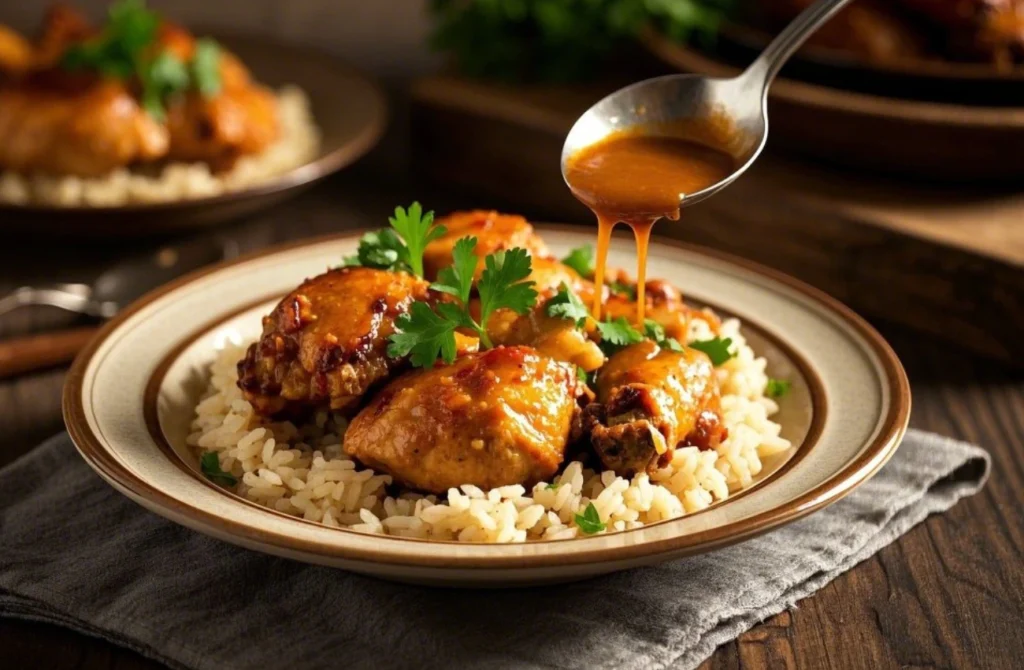
Troubleshooting Your Brown Stew Chicken
Common Challenges and Solutions
Even experienced cooks occasionally face challenges when preparing brown stew chicken. Understanding how to address these issues ensures consistent success with this beloved dish.
If your sauce seems too thin despite extended simmering, you have several remediation options. The simplest approach involves removing the chicken pieces temporarily and increasing heat to reduce the sauce more rapidly. Alternatively, create a slurry by mixing 1 tablespoon cornstarch with 2 tablespoons cold water, then stir this mixture into your simmering sauce. The sauce will thicken within minutes as it returns to a simmer, achieving that perfect coating consistency.
Conversely, if your sauce becomes too thick, simply add chicken broth or water in small increments until reaching your desired consistency. Reheating leftover brown stew chicken often requires additional liquid, as the sauce continues to thicken when refrigerated.
When flavor balance needs adjustment, consider what’s missing rather than simply adding more of everything. Overly salty stew can be balanced with a squeeze of lime juice or a teaspoon of brown sugar. Bland results often indicate insufficient browning during the caramelization phase—unfortunately a step that cannot be corrected afterward. For future batches, ensure proper caramelization of sugar and thorough browning of chicken pieces.
If your chicken hasn’t reached desired tenderness despite following cooking times, simply continue simmering until the meat easily pulls from the bone. Different chicken sizes and cuts may require adjusted cooking times. Patience yields the tenderest results.
For make-ahead convenience, brown stew chicken actually improves with time as flavors meld. Prepare a day in advance, refrigerate, and gently reheat for even more developed flavor profiles. The dish freezes exceptionally well for up to three months—simply thaw overnight in the refrigerator and reheat slowly, adding a splash of broth if needed to refresh the sauce.
Conclusion: Bringing Caribbean Warmth to Your Table
The journey of making authentic brown stew chicken is as rewarding as the final dish itself. Each step—from marinating the chicken in aromatic herbs and spices to watching the sauce transform into a rich, savory gravy—connects you to generations of Caribbean home cooks who have perfected this beloved recipe. As you share this flavorful meal with family and friends, you’re not just serving dinner; you’re offering a taste of Caribbean culture, history, and heart.
What makes brown stew chicken truly special extends beyond its delicious flavor—it’s a dish that encourages gathering. Like many slow-cooked traditional recipes worldwide, it brings people together around the table for unhurried enjoyment and conversation. The aromas filling your kitchen as it simmers signal care and attention, the hallmarks of cooking that nourishes both body and spirit.
I encourage you to make this recipe your own through subtle variations that reflect your taste preferences while honoring the dish’s essential techniques. Perhaps you’ll start a new tradition in your own household—Sunday brown stew chicken that becomes the anchor of weekly family gatherings or the special dish friends request when visiting.
Share your brown stew chicken creations with others—through social media, community potlucks, or simply inviting neighbors to experience this Caribbean classic. Food traditions survive and thrive through sharing, adaptation, and the joy of passing beloved recipes to new cooks eager to experience their magic.
Have you tried making brown stew chicken before? What regional variations have you experienced or created? Share your experiences in the comments below—I’d love to hear how this recipe turns out in your kitchen and the memories you create around it!
Frequently Asked Questions About Brown Stew Chicken Recipe
What makes brown stew chicken brown?
The distinctive color in brown stew chicken comes from two key elements in the authentic recipe: the caramelized brown sugar that creates a base for the dish and the browning sauce (also called browning or kitchen bouquet) used in the marinade. The process of searing the chicken in this caramelized base is what gives the final dish its characteristic rich, brown color and depth of flavor.
Can I make brown stew chicken in advance?
Yes! Brown stew chicken actually improves in flavor when made ahead of time. You can prepare the complete brown stew chicken recipe up to 2 days in advance and store it in the refrigerator. The extra time allows the flavors to meld and deepen. When ready to serve, gently reheat on the stovetop, adding a small amount of chicken broth if needed to maintain the consistency of the gravy.
Is there a substitute for Scotch bonnet peppers in brown stew chicken?
If you can’t find Scotch bonnet peppers for your brown stew chicken recipe, habanero peppers make the closest substitute as they have a similar heat level and fruity flavor profile. For a milder version, you can use jalapeños, but the flavor will be slightly different. Remember that the authentic brown stew chicken gets much of its Caribbean character from the distinctive fruity heat of Scotch bonnets.
How can I thicken the sauce in my brown stew chicken?
If your brown stew chicken gravy is too thin, there are several ways to thicken it while maintaining the authentic flavor. The simplest method is to remove the chicken pieces and simmer the sauce uncovered until it reduces to your desired consistency. Alternatively, you can create a slurry with 1 tablespoon of cornstarch mixed with 2 tablespoons of cold water, then stir this into the simmering sauce until it thickens.
What’s the difference between Jamaican brown stew chicken and other Caribbean versions?
While the basic brown stew chicken recipe remains similar throughout the Caribbean, Jamaican brown stew chicken typically features a darker color achieved through more browning sauce and caramelized sugar. Trinidadian versions often include more herbs and sometimes green seasoning paste. Puerto Rican and Dominican variations might incorporate olives, capers, or sofrito. Each island’s brown stew chicken reflects local ingredients and cultural influences while maintaining the dish’s essential character.

